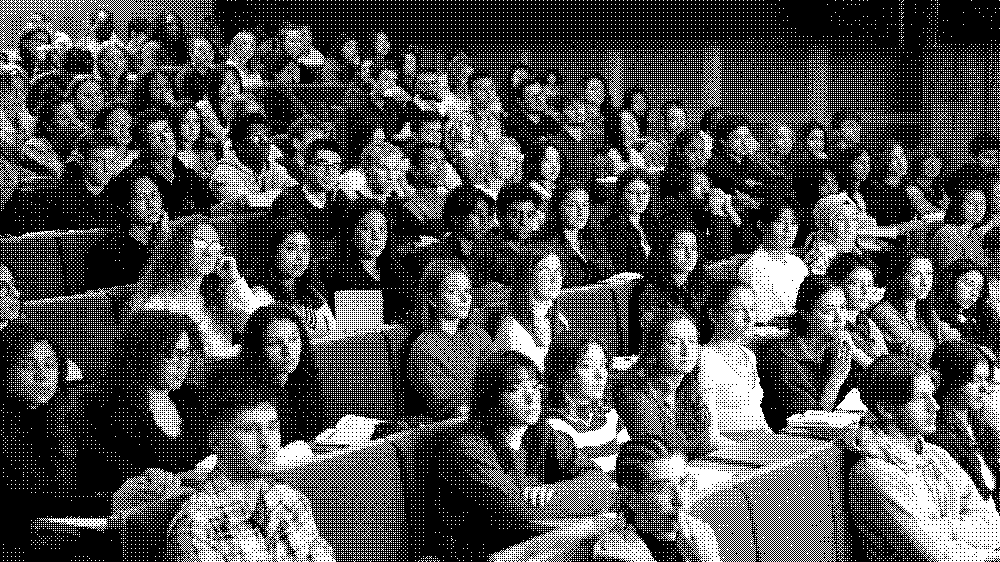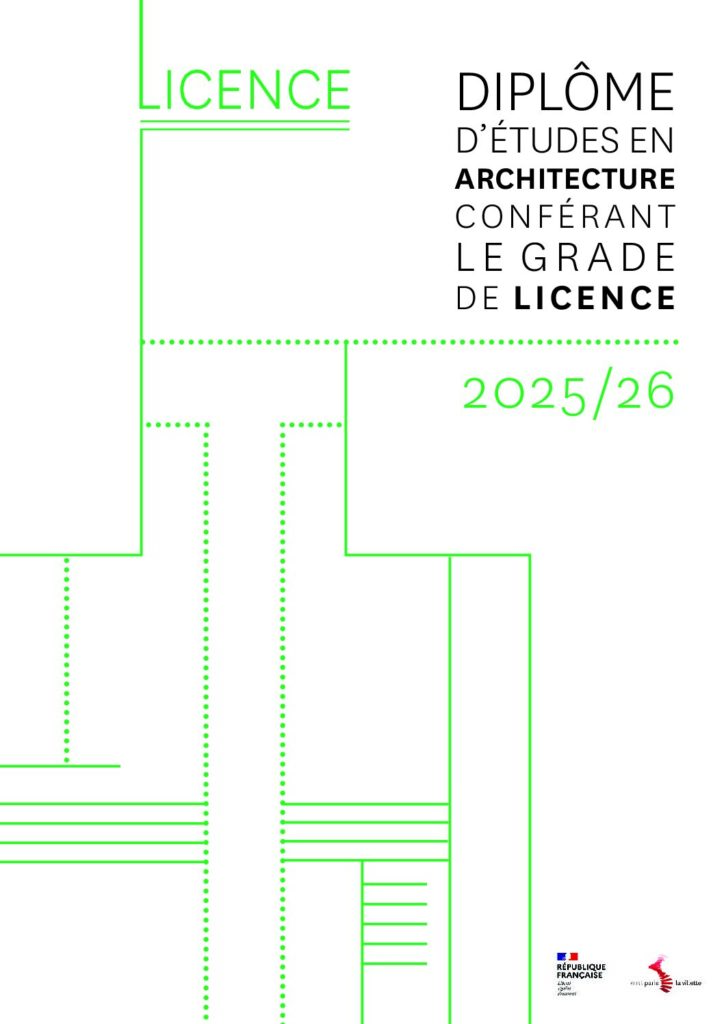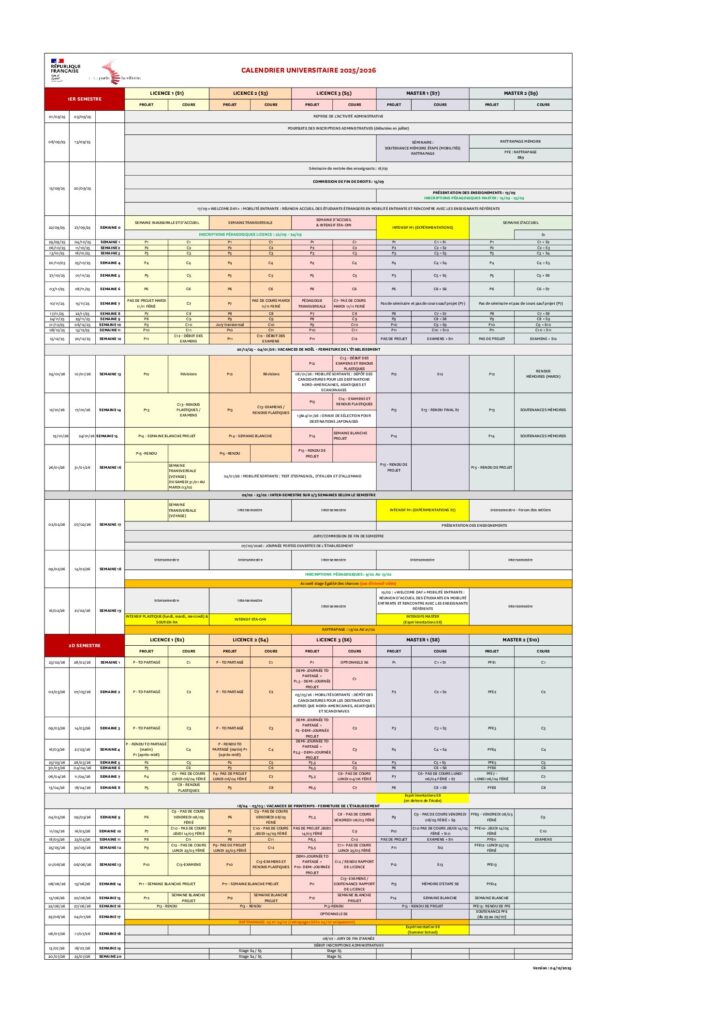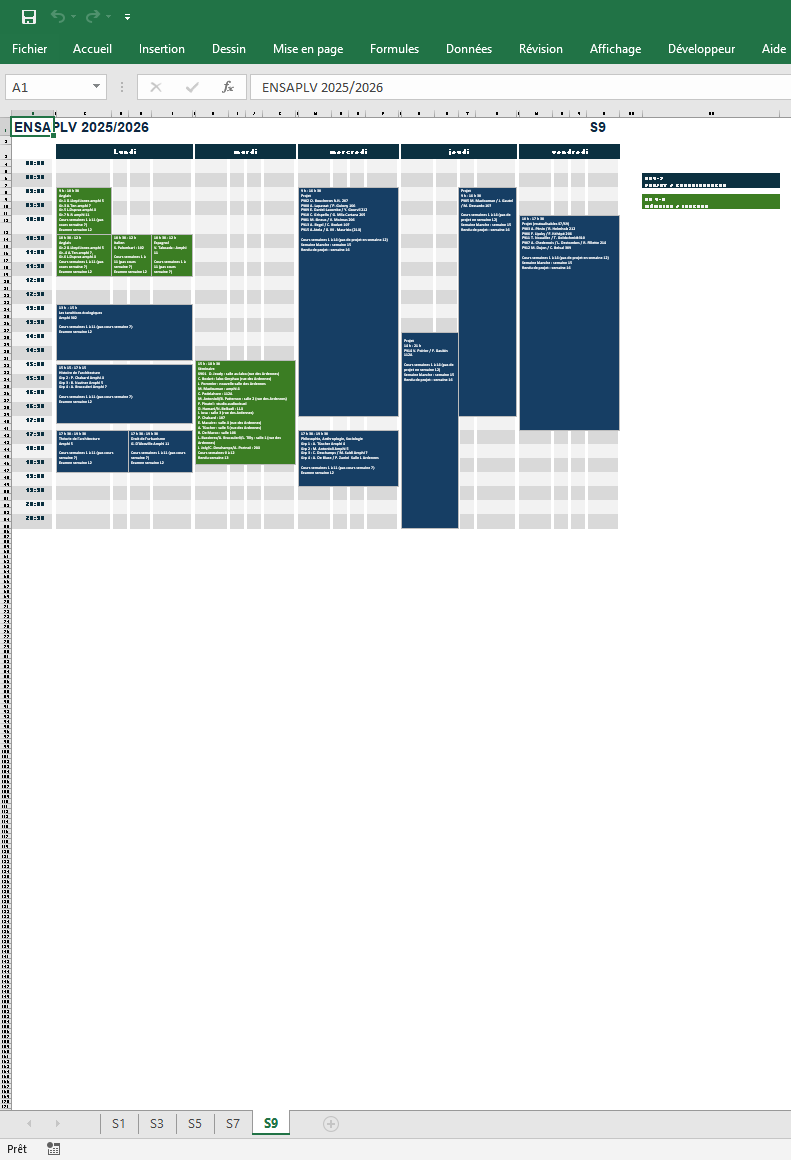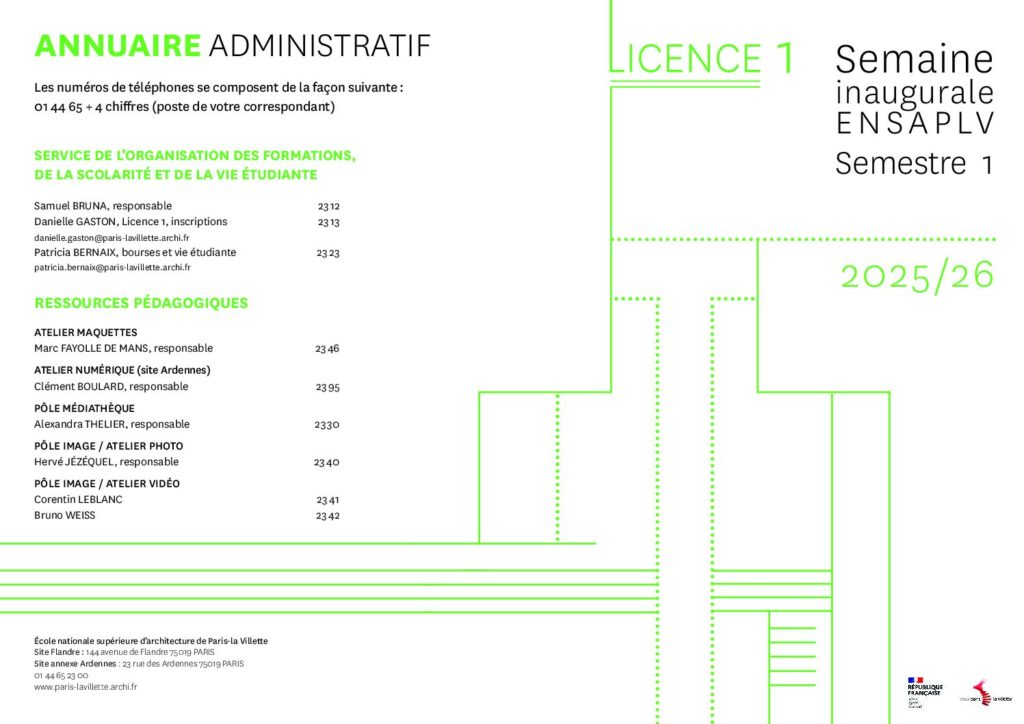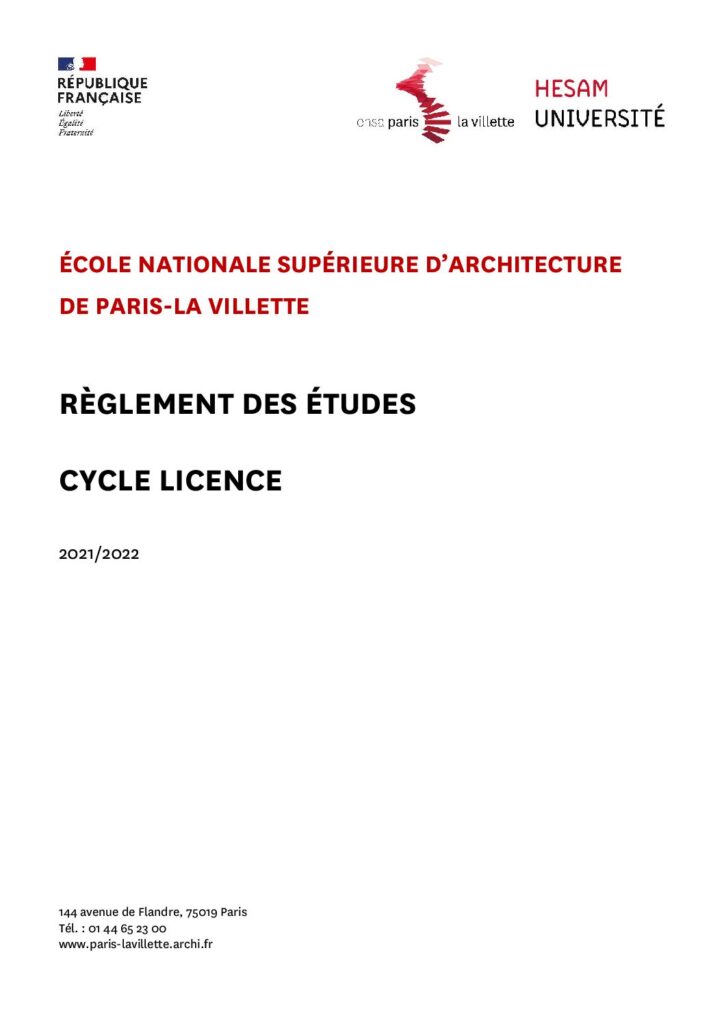Duration
3 years - 6 semesters - 4,200 h of which 2,200 h supervised
Diploma
Diploma of Architectural Studies (DEEA)
Value
180 ECTS
Teaching
21 teaching units (TU), including 6 devoted to the architectural project
Travel
2 study trips in 1st and 3rd year
Courses
2 compulsory internships: 1 work and/or site internship and 1 first-practice internship
The first cycle leads to a Diploma in Architectural Studies (DEEA).
Its aim is to provide basic :
- architectural culture;
- understanding and practicing architectural design through knowledge and experimentation of related concepts, methods and fundamental knowledge;
- design processes in relation to various contexts and scales, and with reference to uses, techniques and temporalities, within an explicit pedagogical framework.
ENSAPLV offers a generalist program structured around the fundamentals of spatial culture and the built, urban and anthropological dimensions of architecture, considering architecture as both a “world” and a relationship to the world. The school thus affirms its ambition to train reflective practitioners, committed citizens and critical intellectuals.
The first cycle enables students to :
- continue their training in the second cycle of architectural studies
- move on to other higher education courses, subject to the specific conditions governing access to these courses;
- enter the workforce. Holders of the DEEA can be employed by architecture, urban planning, interior architecture or design agencies, design and engineering offices, building and public works companies, development firms, etc.
The first cycle is open to candidates for initial training:
- holders of the French baccalaureate ;
- proof of successful completion of a university entrance diploma ;
- proof of a French or foreign qualification accepted as an exemption from or equivalent to the French baccalauréat ;
- benefiting from the validation of their studies, professional experience or personal achievements with a view to gaining access to this level of study.
The first cycle is not offered as a continuing professional education program at ENSAPLV.
The first cycle culminates in the preparation and presentation of an individual study report to the teaching teams responsible for the L.6.21 teaching unit. This report summarizes the academic work and internships completed by the student during the first cycle of studies.
The Diploma of Architectural Studies (DEEA) is awarded on validation by a jury of all the teaching units obtained in this cycle.
Year 1
Semester 1: Introduction to architecture and the city, fundamentals
Semester 1 is a semester of introduction and immersion in architectural culture. It is placed under the banner of “openness to architecture and the city”. The TPCAU-VT, RA and APV fields, positioned as “majors”, collaborate within the framework of cross-disciplinary pedagogies and structured interactions on a “class group” scale. This coloring emphasizes the primary importance of mastering the tools of representation.
Teaching is divided into three units:
- UE1.1 : Around the project: sensitive space
- UE1.2 : Culture and representation
- UE1.3 : Tools and resources for architecture
Semester 2: Building, context and materiality
Semester 2 continues the introduction to the fundamentals of architectural culture, with an emphasis on constructive culture. The TPCAU-VT, STA, RA and APV camps, positioned as “majors”, collaborate within the framework of cross-disciplinary pedagogy or structured disciplinary interactions at “class group” level, as in S1. This coloring emphasizes the dual dimension of constructive culture and design culture emphasized this semester.
Teaching is divided into four units:
- UE2.4 : Around the project: built space
- UE2.5 : Building around a theme
- UE2.6 : Representation
- UE2.7 : Culture
Students are divided into twelve architectural project groups, with around 25 students per group, supervised by two architectural teachers. They are divided into twelve workshops for the teaching of perception and plastic language, each supervised by a plastic arts teacher. Students remain enrolled in these groups throughout the two semesters, in order to encourage personalized follow-up.
In the course of the year, three practical methods are offered to provide personalized support for students in difficulty:
- at the end of the first semester, an individual interview with the teacher of the discipline concerned;
- intensive support courses in the fields of construction and representation;
- the possibility of continuing with second-semester teaching units.
Year 2
Semester 3: Living, space and use
This semester focuses on the socio-anthropological dimension of inhabited space, exploring the fundamental notions underlying the relationship between space and use, in the field of domestic space and urban housing. The TPCAU-VT, SHS, RA and APV fields, positioned as “majors”, collaborate within the framework of cross-disciplinary pedagogy or structured disciplinary interactions at sub-group level.
Teaching is divided into three units:
- UE3.8: Around the project: living spaces, the small building
- UE3.9 : Around the theme of living
- UE3.10 : Tools and resources for architecture
Semester 4: Public architecture and building cultures
Based on the theme of “public architectures”, this semester articulates the issues of the previous two semesters from a dual perspective:
- The relationship between space and society, questioning public space and facilities.
- The relationship between space and construction continues the initiations of semester 2.
The TPCAU-VT, SHS, STA CIMA and OMI fields, positioned as “majors”, collaborate around this dual dimension, within the framework of cross-disciplinary pedagogy or structured disciplinary interactions at sub-group level.
Teaching is divided into four units:
- UE4.12 : Around the project: the public building, space and construction
- UE4.13 : Constructive cultures
- UE4.14 : Around the theme of public architecture
- UE4.15 : Resources and student pathways
The students (around 25) are divided into project groups per semester, and take part in workshops on perception and plastic language, as well as humanities classes.
Architectural projects are taught on a day common to all twelve student groups, with two teachers offering a variety of teaching approaches based on common themes and expectations, and coordinated exercises. These exercises are not yet intended to lead to fully realized projects, but are aimed primarily at acquiring fundamental notions.
Cross juries are organized to enable exchanges between different teaching approaches.
Year 3
Semester 5: Living in the city, contemporary issues
After the fundamental notions of inhabited space and built space in L2, L3 enables students to develop their critical thinking skills by confronting the first complexities of contemporary situations and issues. Semester 5 takes a more in-depth look at the issue of housing, from the point of view of societal, urban and ecological issues. The TPCAU-VT, HCA, STA CIMA and OMI fields, positioned as “majors”, work together on these different dimensions.
Teaching is divided into three units:
- UE5.15 : Around the project: collective housing in an urban environment
- UE5.16 : Living in the city: environmental issues
- UE6.17 : Student resources and career paths
Semester 6: Transforming the city
At the end of the bachelor’s degree cycle, Semester 6 focuses on the articulation of scales and the urban question, both as a legacy and as a perspective. It explores the historical, societal, territorial and environmental issues at stake in the transformation of contemporary spaces. The TPCAU-VT, VTGP, HCA and SHS fields, positioned as “majors”, jointly develop this complex understanding of the city as a sedimented form and structure, and as a geographical, social and political space.
Teaching is divided into four units:
- UE6.18 : Project management: introduction to urban projects
- UE6.19 : Transforming the city
- UE6.20 : Tools for architecture
- UE6.21 : Student resources and career paths
The third year of the undergraduate cycle differs from the first two years in that students apply to join one of the project groups.
Semester 6 is the first step towards the individualized path that students follow in the second cycle of the Master’s program. It offers a first choice of options: plastic approaches, materials environment, OMI experimentation or structural morphology. Students take one of these four courses.
Resource
- Department for the organization of training, schooling and student lifeFlanders site - Office 9 - Esc. 1A, 3rd floor 01 44 65 23 13danielle.gaston@paris-lavillette.archi.fr
Danielle Gaston
Licence 1 / ParcourSup admissions managerInitial training - Department for the organization of training, schooling and student lifeFlanders site - Office 9 - Esc. 1A, 3rd floor 01 44 65 23 14
Florence Breton
Licence 2 / equivalence / request for prior admission / transfersInitial training - Department for the organization of training, schooling and student lifeFlanders site - Office 9 - Esc. 1A, 3rd floor 01 44 65 23 15constance.lemirre@paris-lavillette.archi.fr
Constance Lemirre
Bachelor's 3 / dual-courses educational managerInitial training - Department for the organization of training, schooling and student lifeFlanders site - Office 7 - Esc. 1A, 3rd floor 01 44 65 23 18melina.vantemsche@paris-lavillette.archi.fr
Mélina Van Temsche
Bachelor's, Master's and Bi-cursus / Break internship managerInitial training
